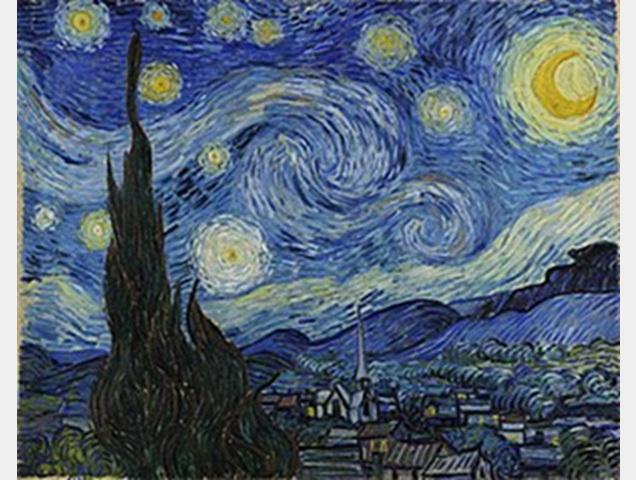
New Quantum Vortex Formation Likened to Van Gogh’s ‘The Starry Night’
Scientists at Osaka Metropolitan University and Korea Advanced Institute of Science & Technology have made a groundbreaking discovery in the field of quantum physics. Researchers have observed the quantum Kelvin-Helmholtz instability (KHI) for the first time, producing unprecedented vortex patterns in quantum fluids. The findings have been likened to the iconic painting “The Starry Night” by Vincent van Gogh, with the crescent-shaped vortex patterns bearing a striking resemblance to the swirling clouds in the famous work.
The quantum Kelvin-Helmholtz instability is a phenomenon that was predicted decades ago, but it has never been observed in quantum fluids until now. The instability is a complex process that occurs when two fluids with different properties interact with each other, creating a boundary layer. In the case of the recent discovery, the researchers used a combination of ultracold atomic gases and carefully controlled magnetic fields to create the perfect conditions for the KHI to occur.
The result was the formation of eccentric fractional skyrmions, which are a type of vortex pattern that exhibits unique properties. The crescent-shaped structures were observed to rotate and move in a chaotic manner, creating a mesmerizing display of quantum behavior.
The discovery has significant implications for our understanding of quantum fluids and the behavior of matter at the smallest scales. Quantum fluids are a type of state of matter that is characterized by the presence of quantum entanglement and the ability to exhibit unusual properties, such as superfluidity and superconductivity.
The researchers used a combination of experimental and theoretical techniques to study the KHI and the resulting vortex patterns. They employed a highly sensitive microscope to observe the behavior of the ultracold atomic gases, while also using advanced computer simulations to model the behavior of the system.
The findings were published in the journal Physical Review X, and have been hailed as a major breakthrough in the field of quantum physics. The discovery of the quantum Kelvin-Helmholtz instability and the resulting vortex patterns has opened up new avenues for research into the behavior of quantum fluids and the properties of matter at the smallest scales.
The comparison to Van Gogh’s “The Starry Night” is not merely a metaphorical one. The crescent-shaped vortex patterns observed in the quantum fluid system exhibit a striking resemblance to the swirling clouds in the famous painting. The similarity is not just aesthetic, but also reflects the underlying physics of the system.
In “The Starry Night,” Van Gogh captured the swirling clouds and stars in a night sky, using bold brushstrokes and vibrant colors to convey the dynamic and chaotic nature of the universe. Similarly, the eccentric fractional skyrmions observed in the quantum fluid system exhibit a dynamic and chaotic behavior, with the crescent-shaped structures rotating and moving in a seemingly random manner.
The comparison between the two is a testament to the power of art and science to capture the essence of the natural world. Both Van Gogh’s painting and the quantum fluid system demonstrate the beauty and complexity of the universe, and the ways in which human creativity and curiosity can be used to understand and describe it.
In conclusion, the discovery of the quantum Kelvin-Helmholtz instability and the resulting vortex patterns in quantum fluids is a major breakthrough in the field of quantum physics. The findings have significant implications for our understanding of quantum fluids and the behavior of matter at the smallest scales, and have opened up new avenues for research into the properties of quantum systems.
The comparison to Van Gogh’s “The Starry Night” is a reminder of the power of art and science to capture the essence of the natural world, and the ways in which human creativity and curiosity can be used to understand and describe it. As we continue to explore the mysteries of the universe, we can draw inspiration from the beauty and complexity of the natural world, and the remarkable discoveries that scientists are making in the field of quantum physics.
Source:
https://www.omu.ac.jp/en/info/research-news/entry-89249.html






